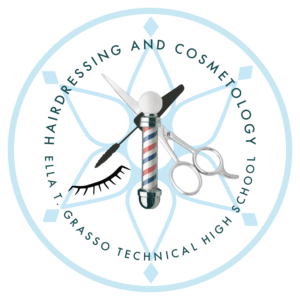
Instructors
Program Description
Hairdressing and Cosmetology was one of the first careers introduced to technical education in Connecticut’s technical high schools in the early 1900’s. Cosmetology also described as appearance enhancement encompasses a broad range of specialty areas including hairstyling, nail technology, and esthetics. It is the art and science of beautifying and improving the skin, nails, and hair, and the study of cosmetics and their applications. The term cosmetology comes from the Greek word kosmetikos, meaning skilled in the use of cosmetics. This field is recognized as one of the oldest professions in the world.
Today, new techniques and specialties are growing more than ever. Estheticians rejuvenate skin and keep some disorders at bay. The industry is in an age of specialization. Day and men-only specialty spas are on the rise, providing many new career opportunities.



